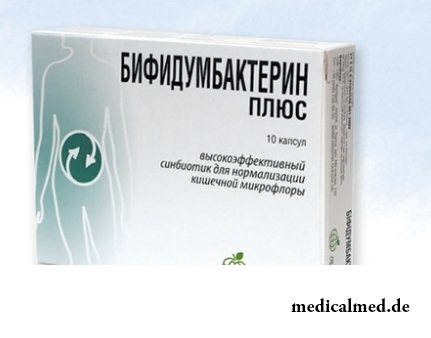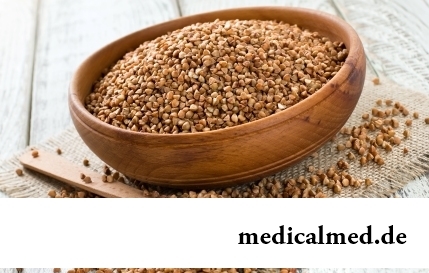





Dysentery
Dysentery – a disease of dirty hands

Dysentery is an acute or persistent infection which proceeds with the phenomena of the general intoxication and affects preferential large intestine of the person. The disease can have both acute, and chronic character. The causative agent of dysentery at adults and children – different types of colibacilli which get into an organism during the use of the infected food stuffs or at contacts with the sick person. Spread of dysentery is promoted by insanitary conditions and non-compliance with elementary rules of personal hygiene. Because of it dysentery received the well-aimed name – "a disease of dirty hands".
Causative agent of dysentery
The infection is caused by different types of dysenteric sticks. As a rule, the greatest activity is shown by Zonne and Fleksner types who lodge pleated a large intestine. The causative agent of dysentery gets to external environment with excrements of the sick person. Bacteria have property to collect in various foodstuff and water. Spread of a disease is promoted by low sanitary culture of the population, non-compliance with rules of personal hygiene, the late appeal to medical institutions. Quite often dysentery at children, especially in the first two years of life comes to light that is connected with inquisitiveness of kids and a habit "to drag in a mouth" any objects which came hand.
Getting into a stomach of the person, a part of bacteria perishes. Other causative agents of dysentery get into intestines where products of their life activity cause necrotic and inflammatory processes. At the diagnosis dysentery symptoms are connected with organism poisoning with poisonous toxins which are soaked up by walls of thick and direct guts, get to blood and cause the general intoxication. Most hard small children and people of advanced age whose immune system is insufficient have such poisoning it is strong for effective counteraction to toxic agents.
Dysentery – disease symptoms
The incubation interval of dysentery makes 2-3 days, but in certain cases the first symptoms of a disease can be shown in several hours after the use of the infected products. It is possible to carry to the main symptoms of dysentery:
- liquid chair with inclusions of slime and blood clots;
- tenesmus – false desires to emptying;
- nausea, vomiting;
- headaches;
- appetite loss;
- general weakness, bystry fatigue;
- organism dehydration;
- fervescence.
Dysentery begins sharply. Originally patients feel an easy fever and a loss of appetite, but then dull aches in a stomach and symptoms of toxicosis which can vary from an easy form (insignificant spasms) to the most serious conditions which are followed by confusion of consciousness and neurologic frustration join these manifestations. Also the frequency of acts of defecation – from 2-3 times a day to almost ongoing diarrhea is various. As it was already told above, at a frequent chair dysentery at adults often is followed by organism dehydration.
At children dysentery develops a little differently. At newborns the disease is often characterized by an asymptomatic current, but lasts much longer, than at adults. If dehydration is followed by the wrong diet and inadequate treatment of dysentery, then further the child can suffer from dystrophy. At children is more senior than one year usually enterokolitichesky dysentery develops. Symptoms of dysentery are typical for food intoxications, are shown quite sharply and observed within 7-8 days. For confirmation of presence of disease-producing bacteria in intestines bacteriological researches of excrements of the child are used.
Dysentery – treatment of a disease

In the course of treatment of dysentery the huge role is played by observance of a rigid diet. The products rich with a cellulose which irritates intestines are excluded from a standard diet of patients. Food the infected people are given in the boiled thoroughly and wiped look. Soups, nonmilk porridges, a souffle and quenelles are recommended, and the number of meals increases at simultaneous reduction of a one-time portion of dishes. As dysentery at adults and children introduces serious amendments in activity of digestive tract, it is necessary to adhere to a diet within several weeks after recovery.
Antimicrobic drugs are used at medium-weight and severe forms of dysentery. Consider that only the qualified doctor taking into account all indications and contraindications has to appoint these or those drugs. At dysentery at children usually register ampicillin, at a heavy current – aminoglycosides and rifampicin. Besides, from the first hours of a disease it is necessary to begin an oral regidratation which is designed to recover water-salt balance. If dysentery is characterized by a long current, it is reasonable to use the means increasing immunity.
At treatment of dysentery also recovery of normal intestinal microflora is of great importance. Usually for treatment of dysentery at adults and children use bacterial drugs – бификол and bifidumbacterium. For normalization of intestinal activity astringents, spasmolysants and grass broths in age dosages are used.
The most rare disease – a disease the Kura. Only representatives of the tribe Faure in New Guinea are ill it. The patient dies of laughter. It is considered that eating of a human brain is an origin of a disease.

Helminthosis is one of the most widespread diseases. Statistically, with any species of helminths it is infected porridges...
Section: Articles about health
Healthy lifestyle today in fashion, and many parents think of that the child from the early childhood played sports. Trainings will help it to become strong and hardy, will improve coordination of movements, and also will exert positive impact on mentality: it...
Section: Articles about health
History of cultivation of a buckwheat contains more than five thousand years. Grain which is received from this plant is used for preparation of porridges, soups, baked puddings and puddings, do flour which is one of the main ingredients of the noodles popular in many countries of it. Buckwheat dishes are useful and tasty, they are perfectly combined with meat, milk, eggs, mushrooms, fruit and vegetables....
Section: Articles about health
Life of the modern woman is very difficult. Opportunities to realize itself are wide: it not only education and career, but also most differently...
Section: Articles about health
About 20% of the population of our planet have a hypertension (permanent increase in arterial pressure). This disease has an adverse effect on the standard of living, reduces working capacity, and in the absence of systematic treatment threatens with such complications as a heart attack...
Section: Articles about health
It is difficult to revaluate importance of kidneys for an organism. These bodies not only perform work on purification of blood of decomposition products and removal of excess liquid. They are responsible also for production of some hormones necessary for maintenance of a normality of a bone tissue, and also for a producing red blood cells – erythrocytes....
Section: Articles about health
Let's begin with the fact that a separate illness which is called "adjournment of salts", just does not exist. In practice this household name of plank beds...
Section: Articles about health
Each failure in work of bodies and systems of a human body is, as a rule, shown by the whole complex of symptoms. In particular, malfunctions with health often cause emergence of cosmetic defects in the form of rashes on a face. Experienced doctors know that локализац...
Section: Articles about health
White teeth and the Hollywood smile – a dream of many people. Long time was considered that the plaque on teeth and change of their color – destiny of those who incorrectly eat smokes and badly brushes teeth. But the paradox is available: at everything the variety of toothpastes, brushes existing today for toothbrushing and conditioners for a mouth the number of the people hesitating of a plaque on teeth does not decrease. Moreover, the plaque is formed even at small children who definitely do not smoke and have no coffee. So in what business, and опас...
Section: Articles about health
What will only not be thought up by persons interested to have a beautiful figure. Here the last innovation – for weight loss needs to be eaten greasy food. Give ра...
Section: Slideshow
Life does not indulge the modern woman special emotional comfort and carelessness. The fatigue, troubles at work, misunderstanding in a family and various illnesses immediately affect a condition of hair and skin. And to look safe and attractive so хоч...
Section: Articles about health
Weakness of an ankle joint – very widespread problem. Its existence is demonstrated by tendency to a podvorachivaniye of legs when walking on heels, frequent painful sprains, pain on average and anonymous toes even after small loadings. Usually people with such pathology take off unpleasant effects by means of the anesthetizing pulverizing and ointments, but it does not lead to radical elimination of a problem. Meanwhile, at the known persistence it is possible to strengthen an ankle to the house...
Section: Articles about health
One of the useful properties presented to the person by the nature is ability to feel fear. This ability is called a signal...
Section: Articles about health
Proofs of efficiency of Mildronate at treatment of coronary heart disease with stenocardia can be found in many publications of the end of the twentieth century. Researches were conducted since 1984, including placebo - controlled effects. In total клиничес...
Section: Articles about health
Beauty shop – the place which is associated only with positive emotions: joy, pleasure, relaxation. However visit of salon where work with biological material of clients, not always harmlessly is conducted. Today more than 100 pathogenic microorganisms who can catch in beauty shop including deadly to health are known....
Section: Articles about health
About influence of fasting days on an organism it is told much – both about advantages, and about shortcomings. It is considered that fasting day...
Section: Articles about health
Bathing in broths of medical flowers and plants (phytobathtub) was eurysynusic since Cleopatra who is a good judge in all that concerns beauty and health. And today phytobathtubs is the simple and available means allowing not only to remove nervous N...
Section: Articles about health
Cold, puffiness of a nose, itch, the watering eyes - characteristic symptoms of the allergic rhinitis resulting from hit of allergens (pollen, house dust, hair of animals, etc.) on a mucous membrane of a nose. Unpleasant feelings often give trouble, serving as the reason of a headache, an acrimony, sleep disorders, and in certain cases and the states close to a depression. How to get rid of undesirable satellites of a disease if near at hand there are no antiallergic...
Section: Articles about health
Statistically, at the address to doctors seven of each ten patients complain of a headache. Actually people, periodically...
Section: Articles about health
Smoking not only exerts a negative impact on the state of health of the consumer of tobacco products, but is an air polluter the substances potentially dangerous to people around. In recent years significantly the number of people, стремящ increased...
Section: Articles about health
History of mankind contains several tens of epidemics whose emergence was compared by eyewitnesses and historians to doomsday. The most terrible of them claimed the lives of millions of people, having made even the whole people to the person of the earth. What they − the diseases striking terror? Whether it managed to the person to find treatment, or he is still powerless before forces of nature?...
Section: Articles about health
The phenomenon of improvement of a condition of the patients at administration of drugs who are not containing active agents, so-called effect of placebo is known...
Section: Articles about health
All are familiar with cold, and practically everyone believes that he has sufficient knowledge and experience that correctly to treat it. In practice most of people makes mistakes in attempts to get rid of rhinitis, and divides numerous delusions it....
Section: Articles about health
Memory is an ability of the central nervous system to fix, keep and as necessary to reproduce information on knowledge or skills received by the person or an animal during life. The mechanism of this process is up to the end not studied....
Section: Articles about health
The number of long-livers is very small. One person from 5 thousand lives up to age of 90 years, and the centenary boundary steps only about...
Section: Articles about health
The saying "the rich do not know how the other half lives" is known to all. In a broad sense it is that we can not always understand the person whose features of a state are unknown to us. If with physiological characters of diseases the situation is more or less clearly (having noticed and...
Section: Articles about health
The sclera and mucous membrane of an eye are intensively supplied with blood vessels which problem - to saturate nervous tissues of body with nutrients and oxygen. In a normality vessels are almost not noticeable, however at their expansion (owing to thinning of walls) become visible, painting a sclera in red color. Quite often red eyes - the signal of any trouble in an organism caused as external irritants, allergens, and diseases which need in about...
Section: Articles about health
